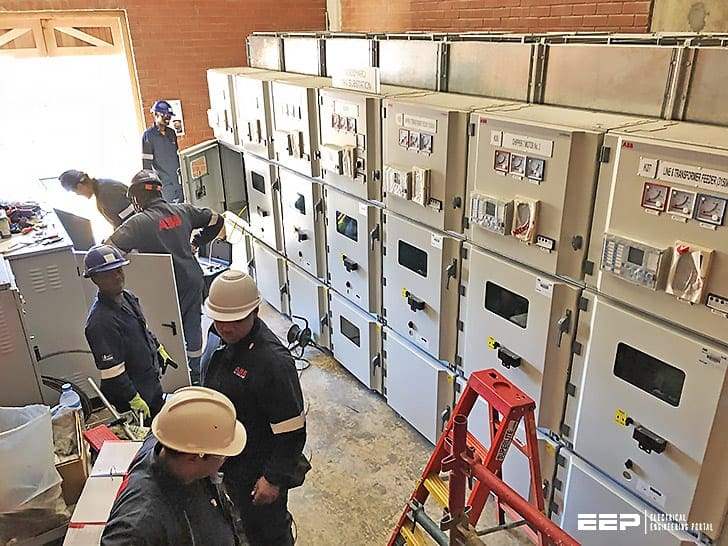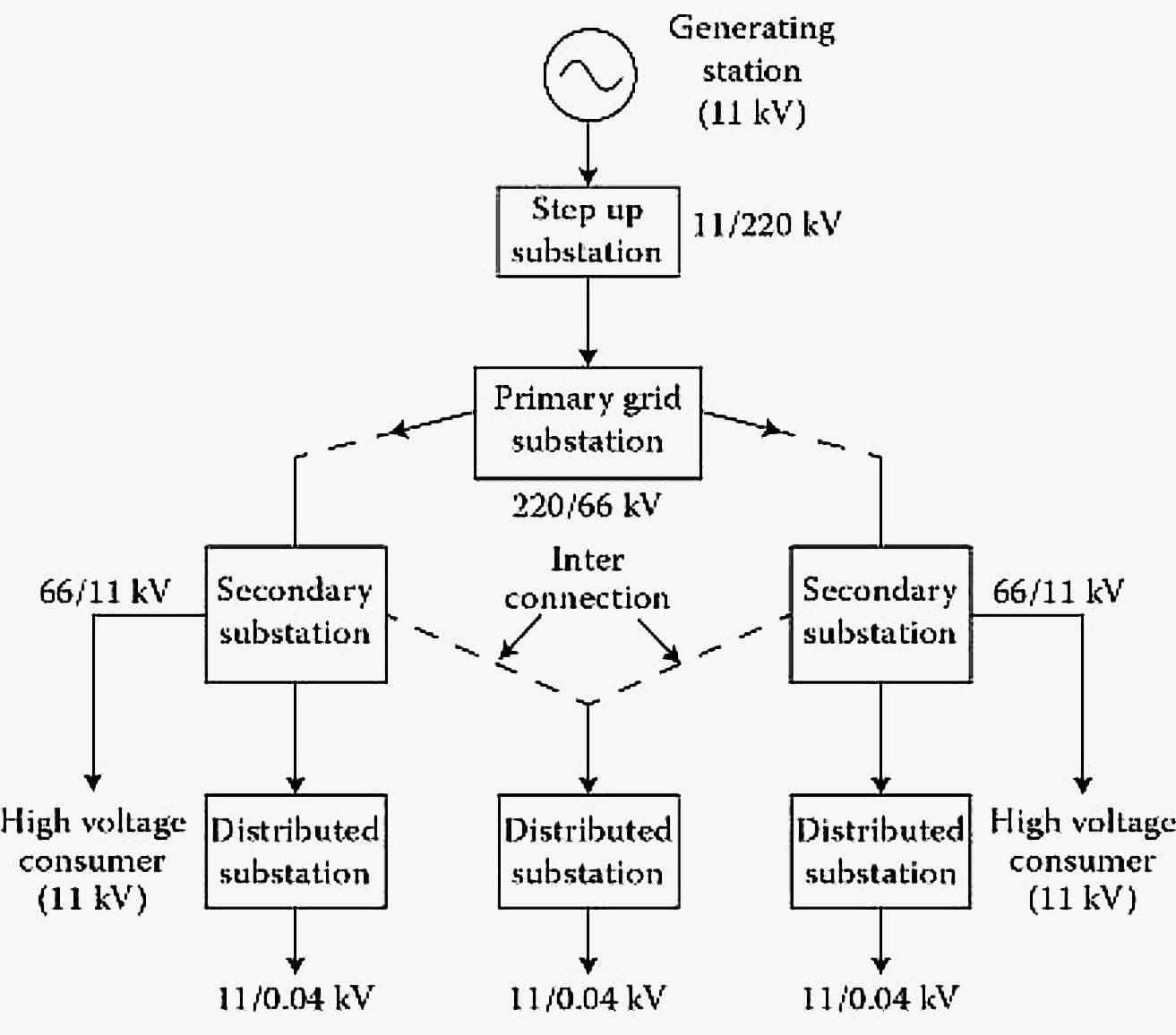Primary substation in a power system
There are different classifications of power substations, which might be used in network. They might be classified by their function, amount of transformers, total power and other parameters. Generally, power substations are used to control the power flow and supply quality in the grid.

The main purpose of the equipment, which is used on substation, is to transform the voltage, protect the grid, and make all necessary switchings.
Depending on the purpose served, power substations might be classified as:
- Step-up substations – This type of substations steps up the generated voltage to the voltage level, which is used to transmit the electric power.
- Primary substations – These substations receive the electric power, which is transmitted by three-phase overhead system. The transmitted voltage is then stepped down to appropriate voltage level.
- Secondary substations – These substations receive energy from the primary substation and step down the voltage level until the level, which is used at distribution substations.
- Distribution substations – This type of substations is constructed not far from consumers. The main function of these substations is to step down the voltage level to three-phase voltage, which is used in distribution network.
Figure 1 represents the structure of a power supply system with all mentioned above substations. Not all power supply schemes may include all these types of substations, and some of substations could be neglected.

Primary substations in a network are used to step down a high voltage level in order to supply secondary substations by lower voltage. Usually they use 110 kV or 220 kV voltage level. Generally, a primary substation includes a high-voltage busbar system, medium-voltage busbar system, auxiliary system, and one or several main transformers.
In order to provide operational flexibility and to have more than one supply alternative, there might be several incoming radial lines.
Drivers for a new primary substation
Often there are several reasons for a new substation investment. Thus, when people or business move to a new location, it produces a load growth in the region.
Moreover, a new primary substation construction could bring some benefits in reliability improvement. The main reason for that is reduction of the line length downstream from the circuit breaker. Reliability is usually considerably improved, as the line length per circuit breaker may be cut into a half in many places.
Thus, the primary substation is shown to the end-consumers by a reduced number of faults. Also the duration of faults per fault reduces slightly, as the time required for isolating the faults and switching on the backup supplies can be somewhat reduced.
| Title: | Design and calculations for HV power substation – Master thesis by Semen Lukianov at Lappeenranta University of Technology, Faculty of Technology, Electrical Engineering |
| Format: | |
| Size: | 2.30 MB |
| Pages: | 95 |
| Download: | Right here | Video Courses | Membership | Download Updates |



Good explanation…and provide more types of protection systems
This is awesome. It is good to know that there can be many substations before reaching the consumer. Looks like this thread will reduce voltage related fires at substations.
This is good analysis but i am interested in modernization of Switch gear or electrical equipment of Substation at Extra High Voltage level as well as interconnection of conventional grid with Solar and wind Mega Farms.
Please forward me documents on the subject of my interest.
Thanks
Please forward
Electrical Design
Modern Maintenana practices